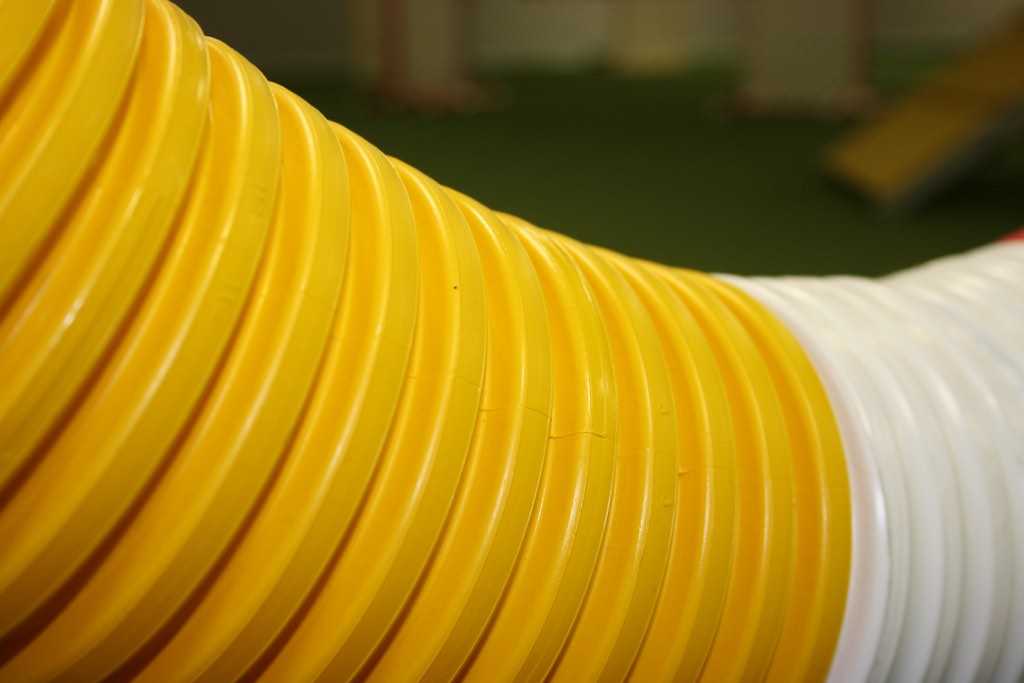Suzanne Clothier's "The Clothier Natural Jumping Method"
18 Jan 2007

As far as I know Suzanne Clothier’s book The Clothier Natural Jumping Method (Copyright 1989) was the first book written for dog trainers that presented a systematic approach for developing a dog’s jumping skills.
Suzanne is a trainer who just amazes me. She has analyzed and studied animal behavior and training methods and through careful application has developed what she terms “relationship based training”. You can read
my brief review of her trainers' seminarto get a feel for her overall philosophy and training approach.
Executive Summary
If you are at all interested in dog jumping buy this book and read it. This is the book that brought jumping training to dog trainers and agility competitors.
Some Details
Just like Suzanne’s other writings this book is thorough in its coverage of the topic, concise and to the point. Suzanne recommends that you read it through at least twice before beginning the program. I’ve read it at least four times so far and am reminded of things on each reading. There is a lot of information packed into this slim book.
The key point of Suzanne’s approach is to have the dog learn to jump without direct intervention by the handler or other props. The dog is allowed to experiment and hone their jumping skills through a progression of varied Jump Chutes. Her intent is to give the dog the skills to solve the jumping challenge presented in each lesson and find the best way for them to jump the sequence.
The book opens with a discussion of strides, jumping style, take off points and jump curvature. She then presents jump chutes, definitions of jump types, jump construction, and how to measure jump locations within the jump chute.
Once the prerequisites are out of the way Suzanne presents “The Natural Jumping Method”. Through measurement of the dog’s height at the withers, body length and height of the elbow (not as important as the first two) Suzanne has developed tables for calculating a dog’s stride length. (Other jumping systems directly measure a dog’s stride length on the ground; requiring interpretation by the trainer to correctly judge the degree of extension/compression of the dog’s stride.)
Suzanne then presents a sixteen week program of three lessons per week, each lesson contains two sets of three jumping passes through the jump chute. The location of the jumps and the types of jump are varied in a step by step progression. This progression allows the dog to learn how to adapt to the challenges presented by each sequence. Prior to each group of lessons Suzanne explains the goals and the jump chute configurations. The key to her method is to always allow the dog to figure out how to “solve the problem” of the each sequence. The handler is to give the dog as much time as he needs to solve a sequence before advancing to the next lesson.
At the end of the sixteen week program Suzanne describes some next steps to take including curved jump chutes.
My Two Cents
I really like that Suzanne presents a detailed step by step training progression along with the rationale for each set of drills. While I have attended a Jen Pinder jumping seminar and talked about jumping with more knowledgeable trainers, I don’t pretend to be able to develop my own jump training program so the less opportunity I have for misinterpreting my dog’s actions the better. I have been following this program with Meeker (we are currently at week 12) and I’ve only seen positive change in Meeker’s confidence and ability to handle jumping challenges so far.
I’d like to correct a common misconception about Suzanne’s training system. I’ve mentioned this book to other agility trainers and some will say something like “well it is good as far as it goes but she only uses fixed distance grids”. While it is true the progression
starts with fixed distance grids, once the problem solving phase begins both the distance between jumps and the types of jumps are varied.I only have a couple nits to pick with this book. The typesetting and photos are showing their age, and additional photos and/or diagrams identifying desirable jumping form or what to look for would be helpful. The text is quite concise, sometimes additional restatement or reinforcement of key concepts would be helpful or, as some books do, highlight the “remember this” key concepts in a sidebar or some such.
I would really like to see her expand on the brief section on jump training for agility. This program takes the dog very far but it would be helpful to identify jump chutes to take dogs all the way to the sometimes “extreme” jump sequences of excellent/masters courses. I’ve emailed Suzanne about expanding the next edition in this area and am hoping to spur her interest in that direction.
In the New Notes section at the beginning of the book Suzanne writes that she plans to issue a revised and updated version of the book, along with a video, at an unspecified future time. I look forward to the day she completes that task. It will be very interesting to see how she has progressed in this area and how she views the books, articles, and other training approaches that have developed based on her seminal work.
If you enjoyed this article won't you please:  Thanks!
Thanks!
